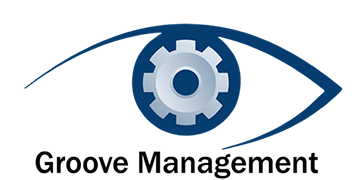The Flying Trapeze Change Model
Change is an inevitable part of life and business, often requiring us to step into the unknown with courage and trust. The Flying Trapeze Change Model offers a powerful framework for understanding and managing this transition, drawing from the daring art of trapeze performance.
Imagine a trapeze artist soaring through the air. To reach the next bar, they must release their grip on the current one at the perfect moment. This act mirrors the process of change: we must let go of outdated practices, mindsets, or systems while confidently reaching for new opportunities. The model breaks this journey into two critical phases:
Releasing the Old: This involves identifying and relinquishing what no longer serves us—be it inefficient processes, traditional hierarchies, or comfort zones. It requires trust in the process and a willingness to move forward, even when the outcome isn’t fully visible.
Embracing the New: As the old is released, the focus shifts to grasping the new. This could mean adopting innovative technologies, fostering collaborative cultures, or exploring fresh strategies. Success here depends on preparation, timing, and a safety net of support—whether through training, team collaboration, or resilience.
The beauty of the Flying Trapeze Change Model lies in its simplicity and universality. It reminds us that change isn’t a single leap but a dynamic balance of release and renewal. A safety net—built from strong leadership, clear communication, and adaptability—ensures we can take risks without fear of falling.
For organizations and individuals alike, this model encourages a proactive approach to transformation. By mastering the art of letting go and embracing the new, we can swing toward a future of growth and innovation. Ready to take the leap?
At Groove Management we conduct workshops on the topic of resilience and change. During the workshops we ask participants the following question:
What is the largest obstacle that you have had to overcome in your life?
Most people answer things like loss of a job, the loss of a loved one, overcoming a health issue, a family crisis or other major challenges. I then ask a more important follow up question:
Was the largest obstacle that you overcame self imposed or externally imposed?
In almost every case the biggest challenges that people faced were externally imposed. We don’t purposely impose adversity in our lives, yet we learn and grow tremendously from having to deal with adversity. I believe that resilience is like a muscle, it gets strengthened through adversity and we create muscle memory. That muscle memory enables us to deal more effectively with future adversity.
Once we come to terms with the changes required, we begin to adapt. We change our behaviors and begin to accept the new ways of being and doing things. In this case, that means better hygiene, social distancing and wearing masks in public. Our success in making the transition build resilience. Resilience is the ability to adapt as quickly as possible from negative change.
There is an image and metaphor that I found extremely powerful when helping individuals and organizations to navigate change. The image below shows a flying trapeze. In this case it is a contestant on American Ninja Warrior, but it could be a business executive, a mother, a school teacher, a nurse, a clergyman, a software developer or anyone else. In order to make a successful transition from one trapeze to the other, the person must do two things at once.
Embrace the new and release the old.
This is the ultimate acceptance of change. If the trapeze artist fails to release the old while embracing the new they get pulled in two opposing directions and are sure to fall. Call it a leap of faith, but our current situation requires all of us to conduct a flying trapeze maneuver by releasing our old ways of being and to embrace the new normal that we will all figure out together.
For those who are motivated by music rather than visuals, there is a song that I use when conducting change management work. The song is “Closing Time” by Semisonic. The refrain in the chorus states “Every new beginning comes from some other beginnings end”. I love that line and I find that it can be super helpful when in transition.
Key Takeaways:
Let Go with Purpose: Identify what to release to make space for progress.
Reach with Confidence: Prepare and seize new opportunities with a supportive foundation.
Build Your Safety Net: Leverage resources and resilience to navigate uncertainty.

